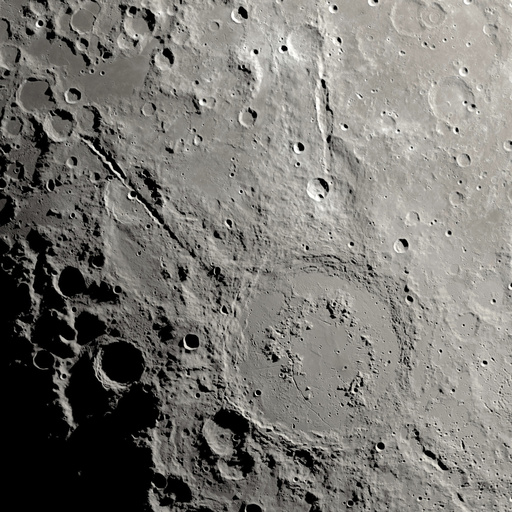CAPE CANAVERAL, Fla. — Recent studies indicate that a significant asteroid impact billions of years ago was responsible for creating two extensive canyons on the far side of the moon. This discovery is promising for scientists and NASA, which is planning to send astronauts to the relatively pristine south pole of the moon, located on the near side that remains undisturbed by this ancient event and houses older, unweathered rock formations.
U.S. and British researchers utilized images and data gathered from NASA’s Lunar Reconnaissance Orbiter to meticulously chart the impact zone and trace the trajectory of debris that formed these canyons roughly 3.8 billion years ago. Their findings were published in the journal Nature Communications on Tuesday.
The asteroid, estimated to have passed directly over the lunar south pole before colliding with the moon, generated a massive basin and propelled large boulders at speeds approaching one mile per second. In just about 10 minutes, the debris, striking the surface like projectiles, carved out two canyons that rival the Grand Canyon in Arizona, contrasting sharply with the millions of years it took to create that terrestrial landmark.
“This was a very violent, a very dramatic geologic process,” remarked David Kring, the lead author of the study from the Lunar and Planetary Institute in Houston.
Kring and his team estimate that the asteroid measured approximately 15 miles in diameter and that the energy produced during this impact far surpassed the cumulative power of the world’s nuclear arsenal by more than 130 times. The majority of the debris was ejected in a direction away from the south pole, as noted by Kring.
Consequently, the lunar area targeted for exploration by NASA, located around the moon’s near side, remains largely clear of debris from this impact. This situation ensures that older rock formations, aged over 4 billion years, are available for future lunar explorers to study, potentially providing insights into the moon’s formation and that of Earth as well.
Kring also highlighted the uncertainty surrounding whether these newly discovered canyons are in areas of permanent shadow, akin to certain craters located at the moon’s south pole. “That is something that we’re clearly going to be reexamining,” he added.
The moon’s permanently shadowed regions are thought to contain substantial amounts of ice, which could be vital for future moon missions, serving as both drinking water and a resource for rocket fuel.
NASA’s Artemis program, serving as the successor to the Apollo missions, plans to reintroduce astronauts to the moon during this decade. The forthcoming mission is set to launch astronauts around the moon next year, with a lunar landing anticipated to follow about a year thereafter, marking the first time astronauts will set foot on the moon since the Apollo era.




